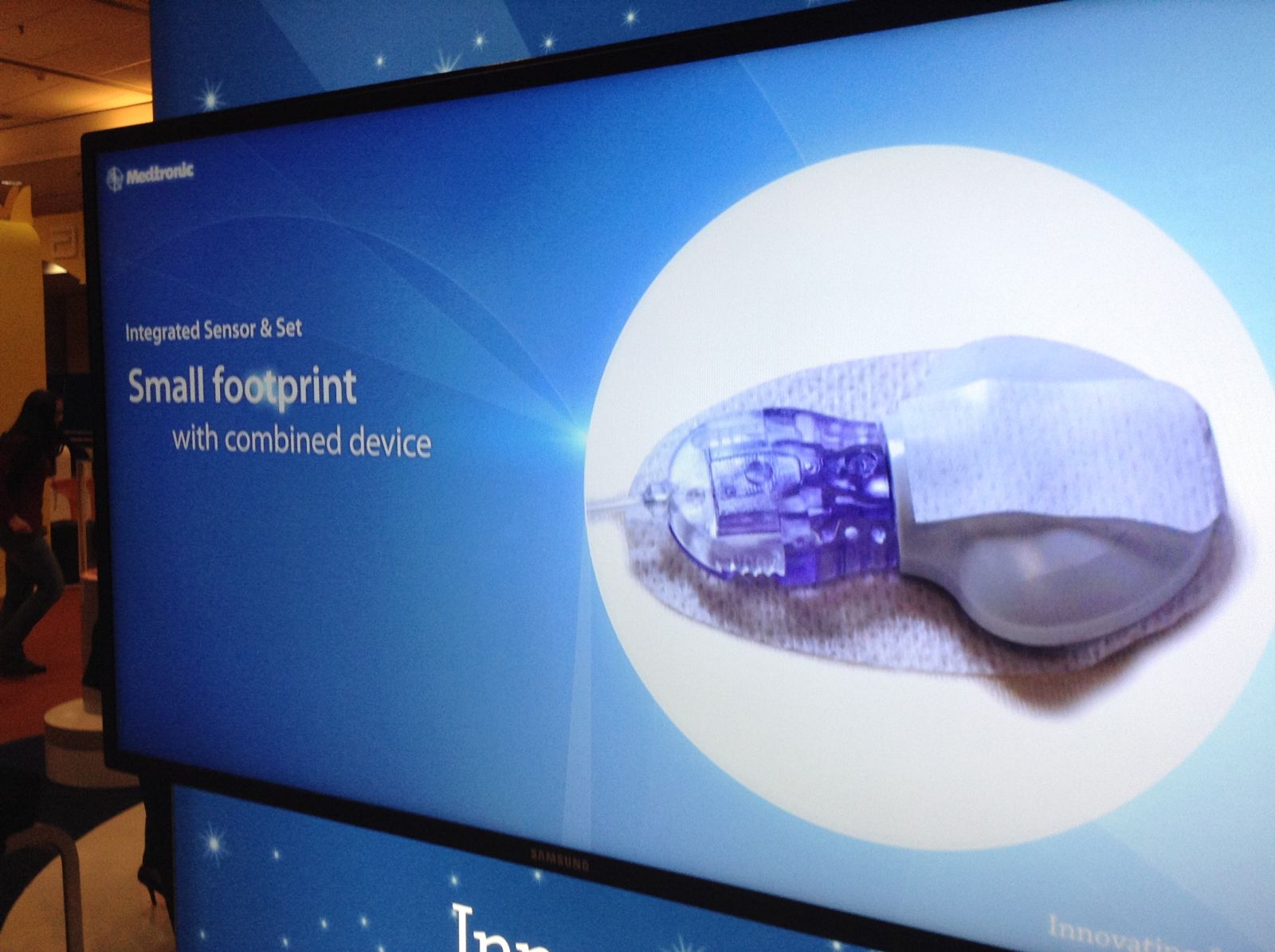Workshop on Innovation Towards an Artificial Pancreas
By Adam Brown

by Adam Brown
On April 9 and 10, we had the opportunity to visit the campus of the National Institutes of Health (NIH) in Bethesda, MD, for the FDA/NIH/JDRF Workshop on Innovation Towards an Artificial Pancreas. This was the fourth such workshop in recent years (2005, 2008, and 2010). Some of the biggest researchers involved in developing and testing the artificial pancreas (often used interchangeably with the term “closed loop”) gathered to share data, discuss their perspective, and get feedback from the FDA. Many members of industry were also in attendance (e.g., Dexcom, Medtronic, BD) and provided updates on their new technology. The sense of progress since the 2010 workshop felt real – there have now been multiple studies of the artificial pancreas outside of hospitals; many systems run on mobile phones; a number of studies have examined control with other hormones (e.g., glucagon, amylin); and some very big strides have been made in CGM accuracy/reliability.
Below, we highlight some of our key takeaways from the meeting. (For background on the artificial pancreas, please see the learning curve in diaTribe #39 and conference pearls in diaTribe #44.)
1. Dr. Edward Damiano shared preliminary results from five patients in his very ambitious five-day closed-loop study. Patients in the study wear a Dexcom G4 Platinum CGM, two Tandem t:slim pumps (dosing insulin and glucagon), and use an iPhone 4S – the latter acts as the “controller,” receiving CGM data and deciding how much and glucagon insulin to deliver. Patients wear the closed-loop system for a full five days, have free run of a three-square-mile area of downtown Boston, and can eat and exercise as they please. Thus far, overall average blood glucose using the system has been a stellar 128 mg/dl, with less than 1% of blood glucose values less than 60 mg/dl. We like that the system is intended to be easy and adaptable – to start it, only a patient’s weight needs to be entered. The controller takes care of all the insulin and glucagon dosing, and patients can also opt to take a simple pre-meal priming bolus by answering the question, “Is this more than, less than, or about equal to the number of carbs you typically eat?” (In other words, no carb counting!) What’s cool is that the control algorithm learns over time from its performance and improves its dosing by automatically adapting the bolus size. We think these early results are impressive, especially because the trials are taking place in more real-world conditions. It will be great to see more patients tested in this trial, as well as in two upcoming diabetes camp studies (Camp Joslin and the Clara Barton Camp) slated for this summer. Dr. Damiano’s research group hopes to conduct a pivotal six-month study that tests the final version of its system in 2015. The ultimate goal – and certainly an ambitious one at that – is to have a commercial launch for the closed-loop system by the fall of 2017 (when Dr. Damiano’s son with type 1 diabetes would start college).
 Dr. Damiano’s artificial pancreas controller on the iPhone 4S. It receives information from a Dexcom G4 Platinum CGM and controls two t:slim pumps.
Dr. Damiano’s artificial pancreas controller on the iPhone 4S. It receives information from a Dexcom G4 Platinum CGM and controls two t:slim pumps.
2. There is plenty of enthusiasm for low glucose suspend (LGS) and predictive low glucose suspend (PLGS) technologies. They automatically suspend insulin delivery when a hypoglycemia threshold (e.g., less than 70 mg/dl) is reached (LGS), or even better, when hypoglycemia is predicted (PLGS). Dr. Aaron Kowalski, the head of the Artificial Pancreas Project at JDRF, was quite vocal on this topic at the meeting: “I would like to see within the next 24 months every pump that is speaking to a sensor have low glucose suspend.” As a reminder, Medtronic’s Veo is an LGS system that is approved outside the US, and FDA approval of the US version is expected late this spring or summer (renamed the MiniMed 530G). Meanwhile, Medtronic’s next-generation PLGS device, the MiniMed 640G, is expected to launch in Europe this summer. Dr. John Mastrototaro shared a bit of data on the new system, which in 22 experiments was able to prevent hypoglycemia 63% of the time. We expect to see a lot more data on both of these devices at this year’s ADA meeting in late June.
3. Many speakers were pleased with the strong improvements in CGM, and Dexcom and Medtronic demonstrated that even more improvements are coming soon. There was a consensus that CGM is accurate enough for “treat-to-range” artificial pancreas systems, which will aim to keep patients within a wider zone of 80-180 mg/dl (rather than aiming for a single target like 100 mg/dl). Regarding updates, Dexcom’s Dr. Tom Peyser shared news that the company’s Gen 5 “smart transmitter” (sending CGM data directly to a smartphone) will be available to researchers this fall under an Investigational Device Exemption (IDE). As of the last update, the launch of this device is expected in late 2014 or 2015. (Click here to see a video of the prototype device at 5 minutes, 32 seconds). Meanwhile, Medtronic’s Mr. Rajiv Shah provided an overview of several initiatives to improve CGM – combining the sensor and infusion set into one device (data collection is finishing up to support submission to regulators), using multiple sensors (“redundancy”) to boost accuracy and reliability, and adding algorithms that automatically detect and respond to sensor problems. We think the future of CGM technology is quite bright and believe it will only get easier to use and more accurate in the coming years.

4. There was clear desire to improve communication among devices (pumps, CGMs, and controllers). Drs. Boris Kovatchev (University of Virginia, Charlottesville, VA) and Roman Hovorka (University of Cambridge, UK) characterized device communication as the biggest barrier in artificial pancreas development. Fortunately, Dr. Joseph Cafazzo (Toronto General Hospital and the University of Toronto, Canada) is working with the Continua consortium and JDRF to adopt universal communication standards (e.g., Bluetooth and USB) for insulin pumps, CGM sensors, and blood glucose monitors. The approach seems quite encouraging, and we think it’s only a matter of time before companies move further in this direction.
5. Infusion sets were cited as an under-researched area and one that is critical to improve upon. Dr. Kowalski hypothesized that infusion set failures may be preventing patients in insulin pump studies from achieving better glycemic control compared to those on injections. Dr. Jeffrey Joseph highlighted the lack of data on infusion sets, noting that there’s never been a systematic study to understand what happens to infusion sets after wearing them for more than three days. Dr. Bruce Buckingham explained the high degree of biological variation in infusion sets – in one study, 40% of people could go seven days on one infusion set with no deterioration in glucose control, while others could only go two or three days. We expect to see much more research from industry on this front in the coming years, especially from BD and JDRF’s collaboration to improve infusion sets.







